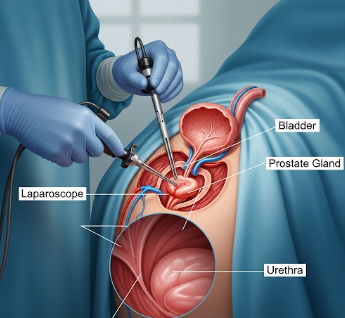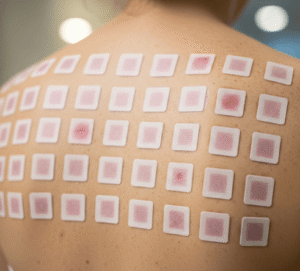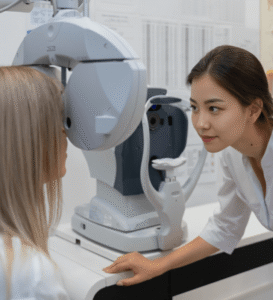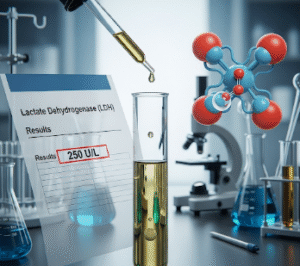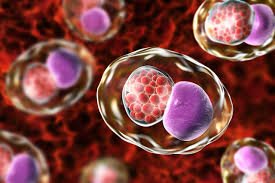Overview
Laparoscopic Radical Prostatectomy is a minimally invasive surgical procedure to remove the prostate gland and surrounding tissues, primarily performed to treat localized prostate cancer. The procedure aims to eliminate cancer while preserving urinary and sexual function whenever possible.
In Korea, laparoscopic radical prostatectomy is performed by highly skilled urologic surgeons using advanced laparoscopic and robotic-assisted techniques, which reduce blood loss, minimize pain, shorten recovery time, and improve functional outcomes.
Highlights:
- ✅ Treats localized prostate cancer effectively
- ✅ Minimally invasive with faster recovery
- ✅ Preserves urinary continence and sexual function in most cases
What is Laparoscopic Radical Prostatectomy?
Laparoscopic Radical Prostatectomy involves removing the entire prostate gland, seminal vesicles, and sometimes nearby lymph nodes through small abdominal incisions using laparoscopic instruments. Robotic assistance may be employed for enhanced precision.
Indications include:
- Localized prostate cancer (confined to the prostate)
- High-risk prostate lesions requiring surgical removal
- Patients seeking minimally invasive cancer treatment
Important: This surgery is generally recommended for men with early-stage prostate cancer who are suitable surgical candidates, and aims to achieve complete cancer removal while maintaining quality of life.
What are the benefits?
- Effective cancer control: Removes the prostate and surrounding tissues to eliminate cancer
- Minimally invasive: Smaller incisions, less pain, and faster recovery compared to open surgery
- Preservation of function: Advanced techniques aim to preserve urinary continence and erectile function
- Reduced hospital stay: Shorter duration in hospital and quicker return to daily life
Key benefits highlighted:
- ⚡ Less blood loss and fewer complications
- ⚡ Faster mobilization and recovery
- ⚡ High precision with robotic assistance when used
- ⚡ Excellent oncological outcomes in localized disease
Procedure Details
1) How should I prepare for Laparoscopic Radical Prostatectomy?
- Preoperative evaluation: PSA testing, MRI, biopsy review, and overall health assessment
- Medication review: Stop blood thinners or anticoagulants as instructed
- Fasting: Usually 6–8 hours before surgery
- Consent and education: Discuss procedure, potential risks, and functional outcomes
- Lifestyle preparation: Stop smoking and maintain proper nutrition to aid healing
2) What happens during Laparoscopic Radical Prostatectomy?
- Anesthesia: General anesthesia administered
- Port placement: 4–6 small incisions made in the abdomen for laparoscopic instruments
- Prostate and tissue removal: Entire prostate, seminal vesicles, and sometimes lymph nodes are carefully removed
- Nerve-sparing (if applicable): Surgeons attempt to preserve nerves controlling erections
- Reconstruction: Bladder and urethra reconnected (vesicourethral anastomosis)
- Closure: Incisions closed with sutures or adhesive strips; drains may be placed if necessary
Duration: Typically 2–4 hours depending on complexity and whether lymph nodes are removed
3) What happens after Laparoscopic Radical Prostatectomy?
- Recovery monitoring: Vital signs and urinary function observed in the hospital
- Pain management: Oral or IV analgesics for post-operative pain
- Catheter care: Temporary urinary catheter placed for 1–2 weeks
- Activity: Gradual mobilization; avoid heavy lifting or strenuous activity
- Follow-up care: Monitor for urinary continence, erectile function, and signs of complications
Highlights for post-procedure care:
- ⚡ Mild abdominal discomfort and fatigue expected initially
- ⚡ Monitor urine output and catheter function carefully
- ⚡ Gradual return to normal activity over 4–6 weeks
- ⚡ Attend follow-up appointments to assess recovery, PSA levels, and functional outcomes
Risks / Benefits
Risks:
- Urinary incontinence (temporary or persistent)
- Erectile dysfunction (especially if nerve-sparing not possible)
- Bleeding, infection, or lymphocele
- Rare anesthesia-related complications
Benefits:
- Complete removal of localized prostate cancer
- Minimally invasive with faster recovery
- Reduced blood loss and fewer complications compared to open surgery
- Preservation of urinary and sexual function when feasible
Recovery and Outlook
- Hospital stay: Typically 1–3 days for most patients
- Full recovery: 4–6 weeks for normal activity; urinary function improves gradually
- Long-term outlook: Excellent cancer control in localized disease; functional outcomes improve over months
- Follow-up: PSA monitoring, functional assessments, and routine postoperative visits
Tips for optimal recovery:
- ✅ Follow all catheter care instructions
- ✅ Gradually resume physical activity and avoid heavy lifting
- ✅ Monitor for urinary leakage, infection, or other complications
- ✅ Attend all follow-up visits to monitor PSA and functional recovery
When To Call the Doctor
- Fever, chills, or signs of infection
- Severe pain not relieved by medication
- Urinary retention, persistent leakage, or catheter problems
- Unusual bleeding or swelling in the lower abdomen
Best Korea Option / Process
Korea provides advanced laparoscopic radical prostatectomy care:
- Top hospitals: Specialized urology centers with experienced surgeons
- Advanced diagnostics: MRI, biopsy review, and PSA assessment for precise planning
- Minimally invasive surgery: Laparoscopic or robotic-assisted surgery for better precision and recovery
- Postoperative care: Pain management, catheter care, and monitoring for functional recovery
- International patient support: Online consultations, appointment scheduling, and telemedicine follow-up
Step-by-step process in Korea:
- Online consultation and preoperative assessment
- Pre-surgery evaluation and preparation
- Laparoscopic radical prostatectomy performed by expert urologic surgeons
- Postoperative monitoring, catheter management, and gradual activity resumption
- Follow-up visits to monitor PSA levels, urinary function, and overall recovery

